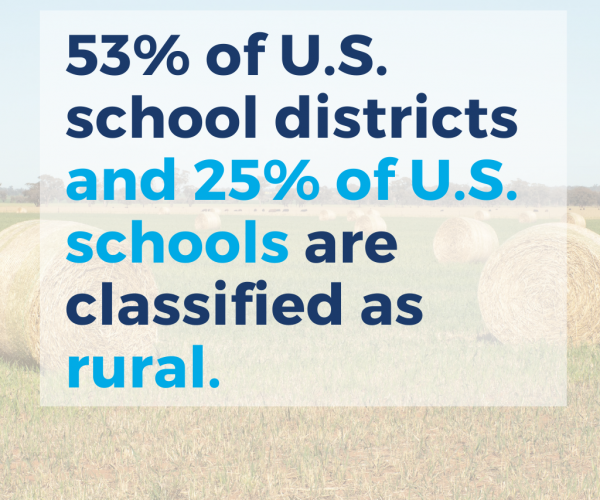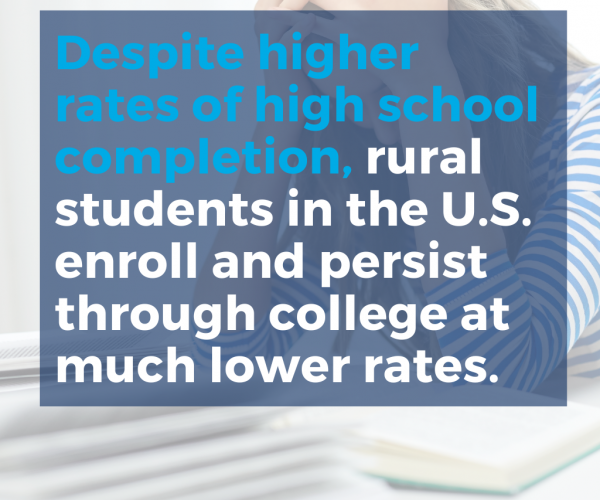The Stena Foundation is passionate about increasing access to quality education for all. We define a quality education as one that fosters all aspects of development for students regardless of their race, gender, ethnicity, age, or socioeconomic status. Our Rural Pathways to Education Project was inspired by this passion and is focused on understanding the challenges that rural students specifically face in obtaining a higher education. We are eager to report some of our preliminary findings from this project in partnership with the Sorenson Impact Center at the University of Utah. We recently completed Phase One of our research which was focused on three main outcomes:


But what does it mean to be rural? As with most definitions, it varies depending on context. In education, organizations define rurality based on a variety of metrics including the number of students enrolled in a school, district, or county, the geographic location of a school, or the population that surrounds the school, among others. The Rural Pathways to Education Project has chosen to use the number of students in a school district as its unit of measurement. This definition was drawn from a combination of resources including the Office of Management and Budget, the U.S. Census, and the National Center for Education Statistics.
Rural school districts are economically, geographically, and culturally diverse. However, there are several trends that tend to span across various rural communities that influence their educational systems and structures. These trends include depopulation, tight-knit community culture, and the presence of multiple community anchor institutions such as churches, community centers, etc. Rural classrooms contain an average of 14.6 students and often operate with lower student-to-teacher ratios and smaller ancillary educational institutions.

The bulk of our research in Phase One was focused on this question. Through extensive data gathering and analysis, we have created four main categories that we believe influence enrollment, persistence, and completion of higher education for rural students. These categories include Academic & Personal Preparedness, School & Community Support, Pathway & Transition Support, and Postsecondary Access.
How should students be academically, socially, and personally prepared to pursue a postsecondary education?
What do schools and community stakeholders need to support their students’ postsecondary readiness, access, and success?
Are there structured and accessible pathways that align with students’ postsecondary goals?
Do students have the financial and logistical capabilities needed to access the postsecondary option of their choice?
How should students be academically, socially, and personally prepared to pursue a postsecondary education?
What do schools and community stakeholders need to support their students’ postsecondary readiness, access, and success?
Are there structured and accessible pathways that align with students’ postsecondary goals?
Do students have the financial and logistical capabilities needed to access the postsecondary option of their choice?
With the understanding we have gained from Phase One, we plan to move our research into Phase Two. In this phase, we will dive into data and trends informed by the framework conducted in phase one. This process will include a scan of current mandates, policies, and initiatives that address postsecondary success, both at the state and local levels. Throughout this phase, we will collaborate and coordinate with the Governor’s Offices and State Boards of Education in both Utah and Idaho. We will also begin to employ community engagement methods to better understand students, families, and community needs. This will include qualitative analysis through interviews, surveys, roundtable discussions, etc.
Follow us on social media for additional information throughout the coming research phases.
We are all team members and each one of us is equally important to attaining our goals. Words matter. How we treat each other matters. You can’t expect to make a positive impact on the world without first attending to your stakeholders, partners, and mission-focused communities.
The ability to hone in on a task, and to make every minute matter is what turns insight into action. When we choose to focus, we make the best use of our time and resources.
We practice constant curiosity and have a passion for research and data-driven solutions. It is imperative that we take the time to analyze each step we take and look for learning opportunities. This approach will ultimately drive the greatest degree of mission focused impact.
We recognize that we can’t succeed alone. Leverage is about finding the most efficient way to partner with our networks and to use our resources to achieve our goals.
We must understand the why and strive to do the right thing every time. Our mission is firmly front and center. Always.